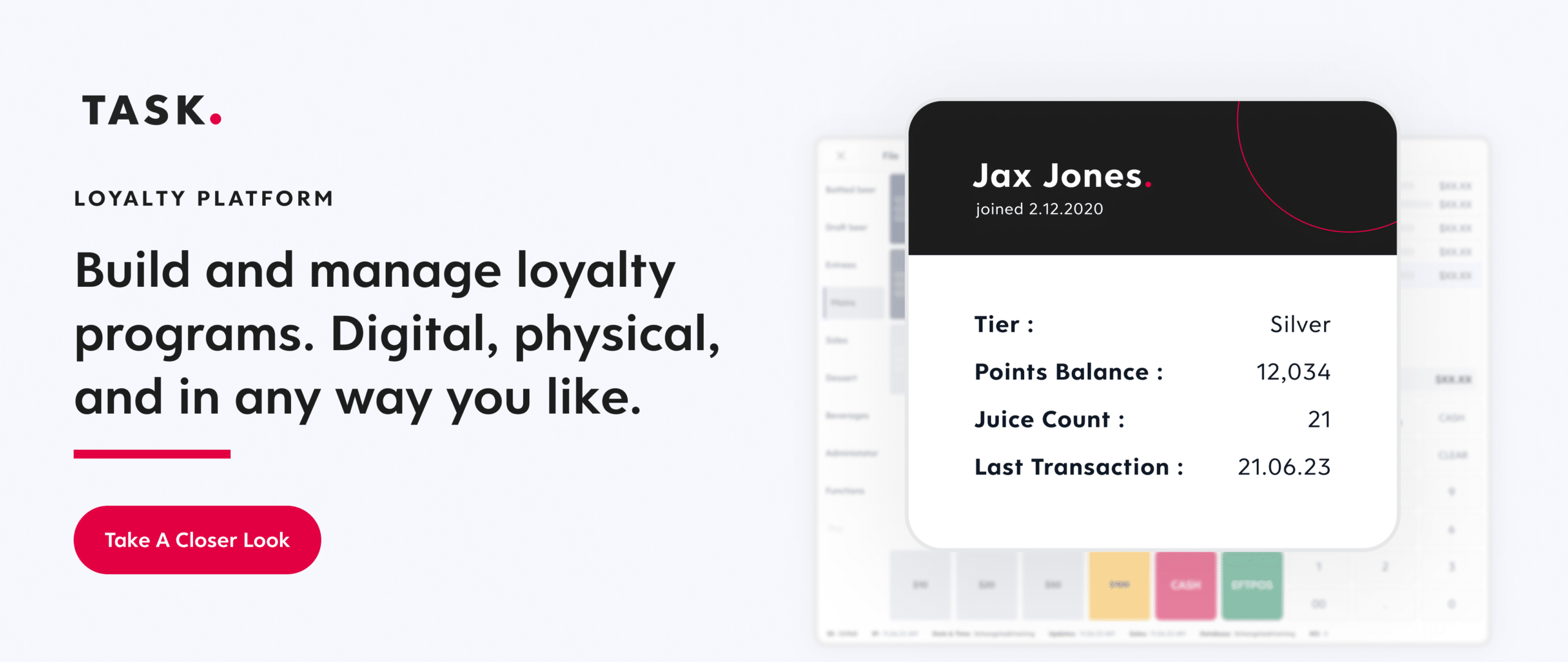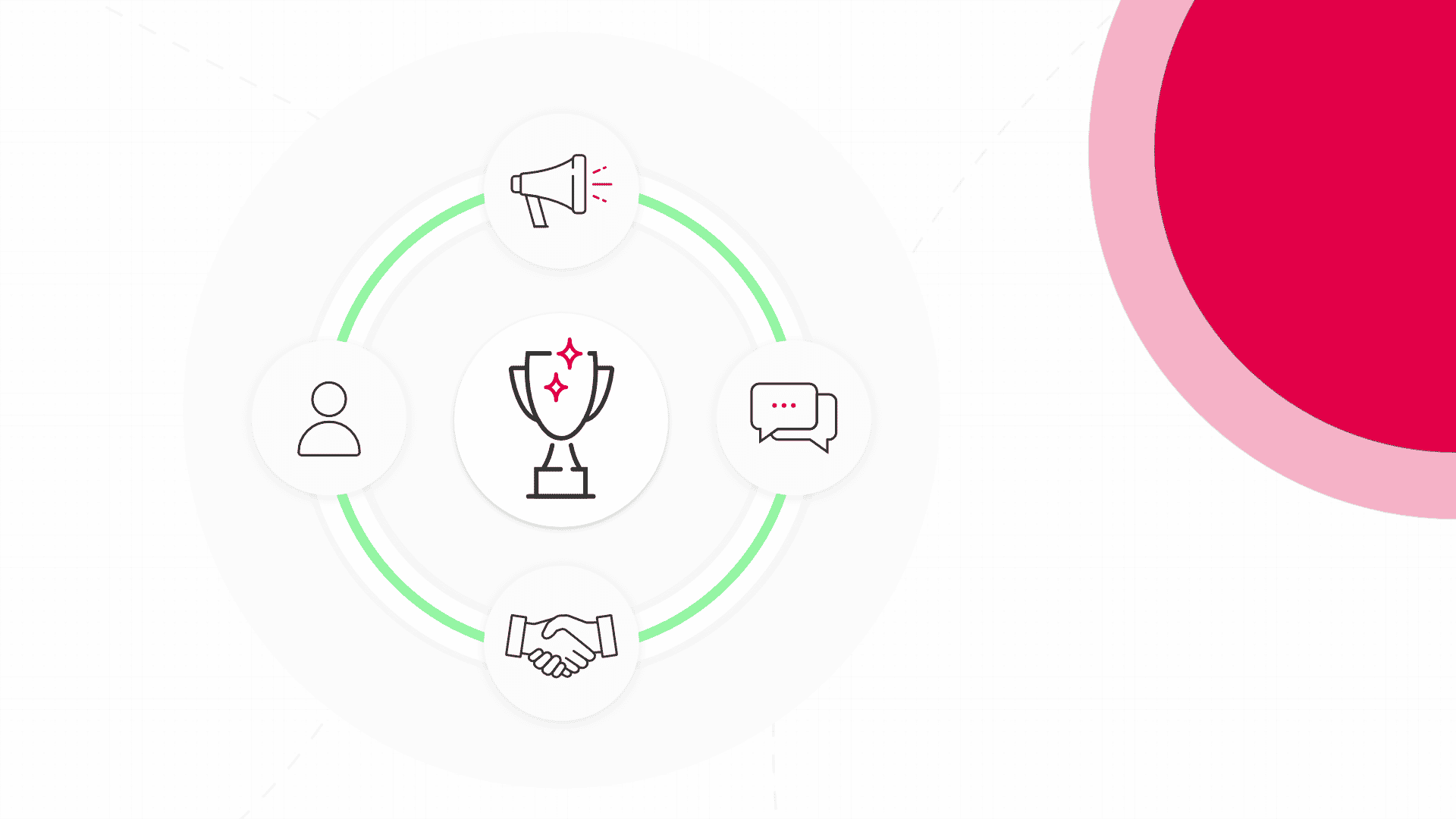It’s no secret that loyalty programs are becoming an essential part of today’s QSR customer experience.
Building a loyal customer base is one of the most effective ways to boost business revenue. In fact, expanding customer retention by just 5% can increase profits by 25-95%. Promoting brand loyalty is the single best way to make the most of existing customers, increase repeat purchases, and improve customer lifetime value.
What customer loyalty can do for QSR businesses?
You’ll see the same message in this 1995 Harvard Business Review article as you will in this 2021 report from Deloitte: build loyalty with your customers. Loyalty is a time-tested strategy that continues to be at the forefront of building revenue for hospitality businesses.
For QSRs, loyalty should be at the forefront of your customer journey. It’s time for your brand to shift more focus on a streamlined customer loyalty program.
Here’s what you need to know right now about tech-driven experiences in today’s digital world.
How do loyalty programs benefit QSRs?
Driving forward revenue and retaining loyal customers is all about building stronger relationships between your brand and your customers. Research shows that 80% of QSR business comes from 20% of a customer base, highlighting just how important it is to develop and influence your existing customers.
A customer loyalty program works on multiple levels simultaneously to grow your revenue and increase customer engagement. A successful customer loyalty program uses and collects data to personalize messaging and reward customers for their business. The result is a system that reinforces its own success, helping continuously improve the customer experience while also boosting business revenue.
Attract more registrations
Customer loyalty programs motivate customers to engage with your brand. Rewarding customers through an easy-to-use loyalty program helps improve the perceived brand value of a QSR.
75% of customers say that they would switch brands in favor of better rewards programs. With so much industry competition, and mounting customer expectations, it’s more important than ever to design customer loyalty programs that stand out in the crowd. The better the offerings and the rewards program, the more likely your customers will stick with your brand and encourage others to do the same.
Even in this digital age, word of mouth is still the most effective way to attract new customers. 92% of shoppers trust a recommendation from a friend or family member more so than any other type of marketing. In this way, building meaningful and trusted relationships with current customers is the best way to gather more loyal customers and build business long-term.
Increase customer value
Loyalty and rewards programs are shown to boost ordering and engagement. Employing a customer loyalty strategy vastly improves business potential for QSRs.
There are two levels to increasing customer value. The first is bringing otherwise “disconnected” customers into the loop.
“We’re seeing a lot of people move away from a classic in-store experience and instead look for better service through digital platforms,” says John LaPorte, TASK President of North America. “It’s no longer just about competing with the business across the street, but rather curating a guest experience that goes above and beyond to engage people.”
The second level of increasing customer value is to continuously satisfy customers who already know and love your brand. A successful loyalty program will be seamless, integrated, and intuitively designed.
Utilizing a comprehensive data stack and advanced technology is essential for providing a personalized digital loyalty program that will bring customers back to your brand again and again.
Reward customer loyalty and focus on personalization
Building a direct and personal relationship is key to building long-term customer retention. The self-cycling benefit of a digital rewards program is that every customer interaction builds more comprehensive behavioral data to get to know your customers and their preferences better.
With every choice that loyalty members make through a digital program, their data becomes more accurate, therefore improving future offers for repeat customers. The result is a customer loyalty system that is constantly improving and paving the way for more meaningful and personal customer experiences.
A QSR loyalty program can act as the central point for identifying and personalizing offers to old and new customers – and to facilitate customer loyalty programs that improve relationships between brands and consumers by offering world-class, data-driven technology.
Improve personal relationships with customers
Customers typically join rewards programs to get better deals and save on food items they know they like. These benefits include the rewards, freebies, and special offers that keep customers engaged.
The underlying benefit of loyalty (and what they may not expect when first joining a program) is fostering a stronger personal connection with the brands they interact with frequently. Loyalty helps customers feel valued, appreciated, and understood.
The QSR business isn’t just about providing quality food to anyone who walks through the door – it’s also about building real and lasting relationships with valuable customers.
A customer loyalty program makes it easier to facilitate and improve these relationships, while simultaneously boosting revenue and output.
Increased revenue opportunities
Loyalty points and rewards incentives are designed to make ordering and trying new menu items fun and engaging.
Aimed to create a more enjoyable customer experience, a customer loyalty program is a key driver in building higher incremental revenue. Whether it’s through coupons, discounts, referral offers, or add-on freebies, loyalty programs provide a stimulating way to encourage more orders at higher values.
More effective customer communication
From a customer perspective, a loyalty program means better deals. It’s crucial, however, to not just offer purchasing incentives, but to offer the right incentives for the right customer.
Using an integrated point-of-sale system (POS), loyalty programs supported by smart technology allow QSRs to collect data for every customer decision, preference, and engagement in real-time.
The result is a customer loyalty program that continuously learns more about customers, making it possible to tailor messaging and offers based on known behavioral history. This makes it easier to build customer loyalty overall and develop an ongoing and mutually beneficial relationship.
Best practices to make the most of a customer loyalty program
Building loyalty is about investing in your customers, making it easy, enjoyable, and convenient for them to interact with your brand. Remember that loyalty is about more than building bigger profits from your existing customer base – it’s also about curating an experience that will encourage customers to become brand advocates to their friends.
Creating a simple system that also taps into customer psychology and personalization is the best way to both retain customers and widen loyalty. There are a few key aspects of a well-designed loyalty program to keep in mind – which require looking closely at the relationship you want to build with your customers.
Make it easy to realize the benefits
A loyalty program should be easy to understand and feature intuitive design. It’s important to make the goal or outcome clear to customers – whether that’s a free meal, discounted delivery, or a new loyalty status with ongoing benefits. It also needs to be clear how customers can achieve that goal, whether it’s by collecting points or by buying a certain number of meals.
The structure and design of a successful loyalty program will look slightly different for every brand based on their offerings and their customers. The underlying mission, however, is to incentivize customers to stay engaged and actively work towards loyalty milestones. 74% of customers say that working towards a goal makes them more loyal to a brand.
Loyalty should consistently provide a connection between customer purchases and their progress in a loyalty program. It’s the idea that with every spend, a customer also gains something (whether it’s stars, points, or something that speaks directly to your brand). This association makes a purchase more meaningful to customers, with a lasting and positive benefit for the future.
Make offers based on the entire customer journey
Customers interact differently with businesses depending on how long they have been interacting with their brand. Newer loyal customers may enjoy exploring a wide range of items and ordering options. Long-time customers, however, are more likely to have the experience to know exactly what they like and how they like it.
Most customers (upwards of 75%) make purchasing decisions based on previous service experiences. With every new order, a customer’s experience grows, and their preferences may change.
Building a database of customer information through a points program helps brands understand exactly where their customers are in their lifecycle. This may mean knowing whether a particular customer is willing to try new items, or if they stick to a few menu favorites.
Targeting offers and messaging based on the customer journey not only helps brands more effectively capture attention but also helps customers feel better heard and understood.
Offer flexibility for customers to earn rewards
Customers want to be rewarded for purchases no matter what it is, or how they place the order. Designing for flexibility means integrating every order touchpoint (whether through an app, at the counter, or at a self-ordering kiosk) to help customers make the most out of the loyalty program.
“Platformize” the process
In order to offer better flexibility, QSR loyalty programs need to rely on a smart technology stack that seamlessly manages every customer interaction from a single platform. It’s about reducing fragmentation by integrating POS technology and making ideal use of program data for effective personalization.
“An omnichannel experience is about bringing forward digital architecture that creates a seamless experience for customers. No matter where they find or interact with your brand, they are getting the same phenomenal experience,” says LaPorte.
Customizing a loyalty program for your brand requires looking closely at what your customers want from you, and how you can most effectively offer better service to your customers.
Monitor the success of a loyalty program
Using an integrated POS system allows businesses to track loyalty and engagement in real-time. Successful loyalty software makes it possible to not just access transaction data, but quickly analyze information such as the redemption rate, loyalty customer rate, repeat purchase rate, and trending order preferences.
Looking at the percentage of transactions associated with the loyalty program in real-time makes it easy to assess which offers are working and which ones need to be changed. Using a comprehensive customer data stack, QSRs can immediately leverage insights to action meaningful and effective changes.
Invest in the right digital tools
Using top-of-the-line integrated technology will help ensure that your QSR brand can manage a multichannel loyalty program in real-time. You should invest in a full digital stack that can support opportunities for personalization across every touchpoint, from emails to apps to in-store kiosks.
With a fully compatible POS system, a top-of-the-line software system will be able to connect interactions and data insights through a single platform, helping you make better business and marketing decisions.
Building an exceptional loyalty program is essential if you want to keep customers engaged with your brand. Better retention rates will help your QSR tap into higher profits and better customer lifetime value. Start digging into the potential of a loyalty program, and build an even better experience for your brand and your customers.

